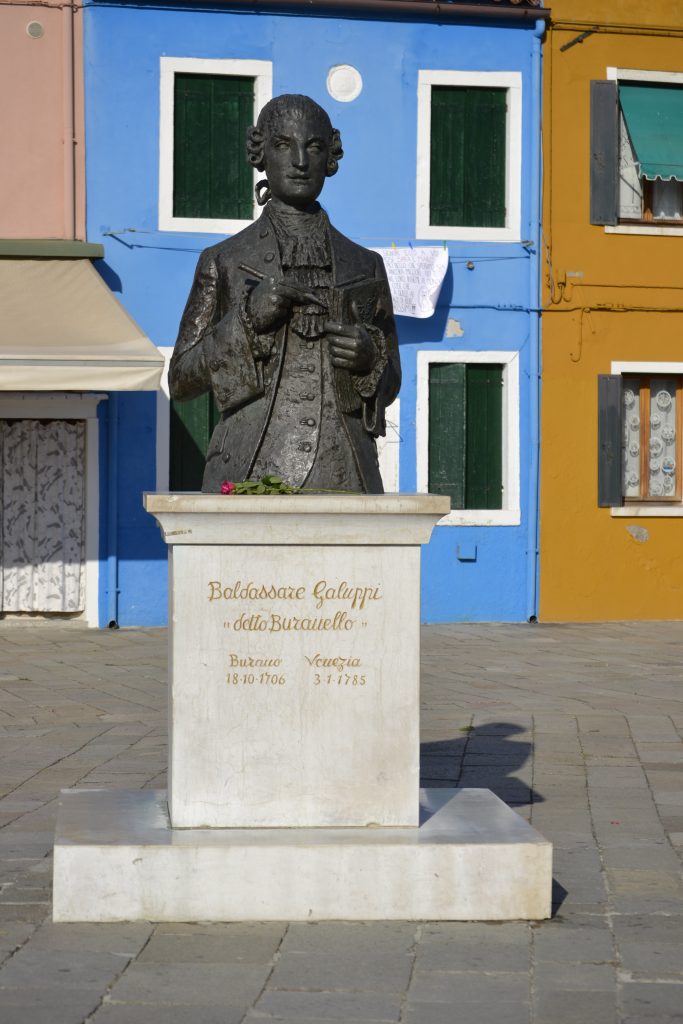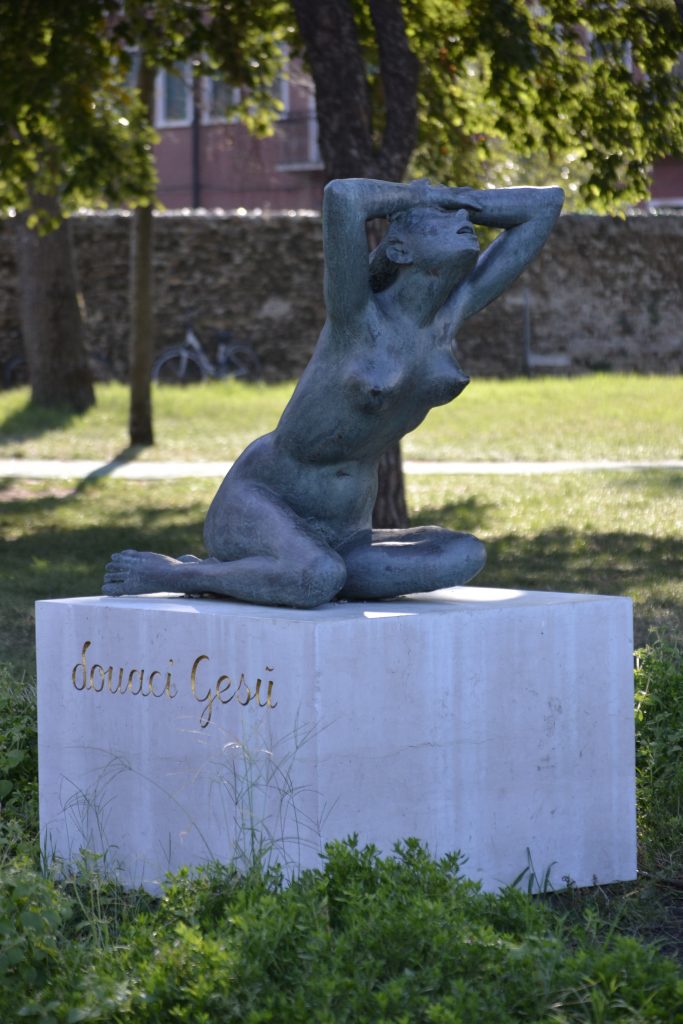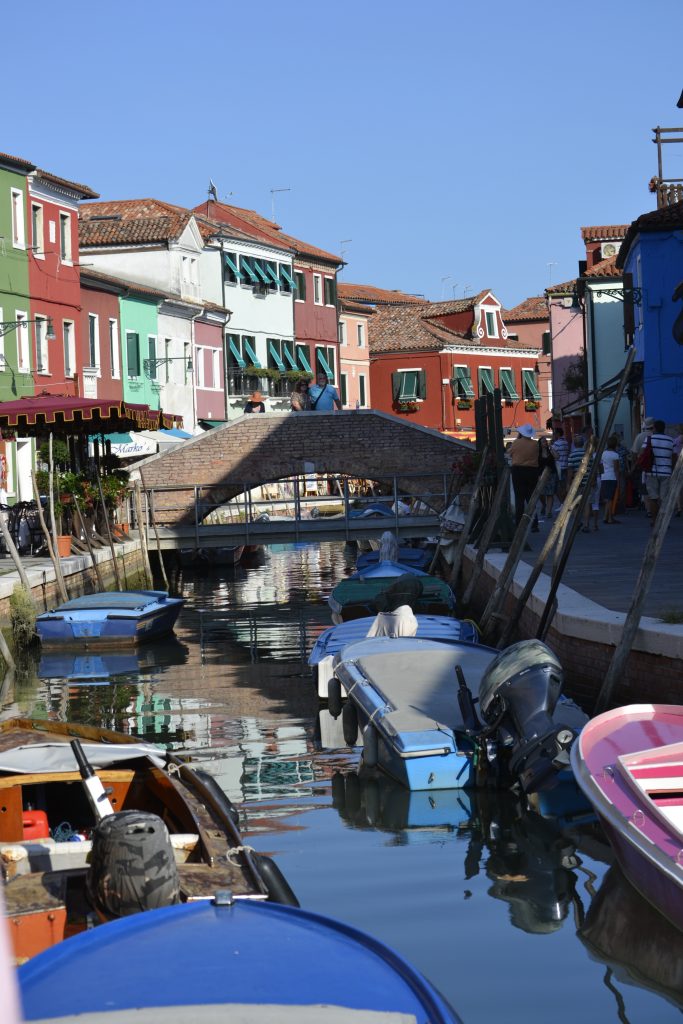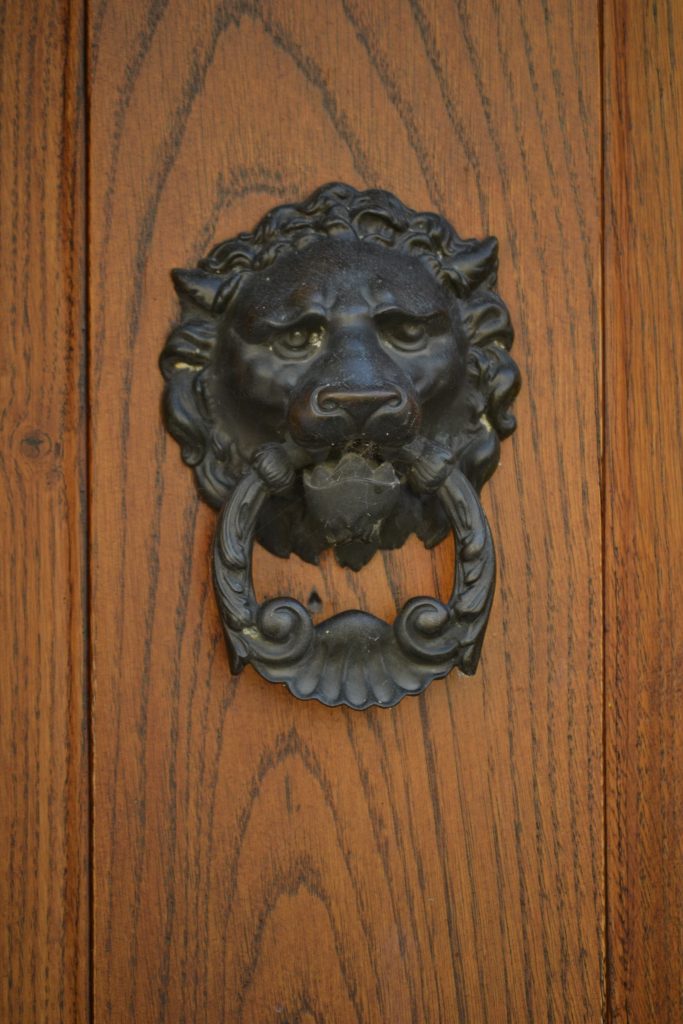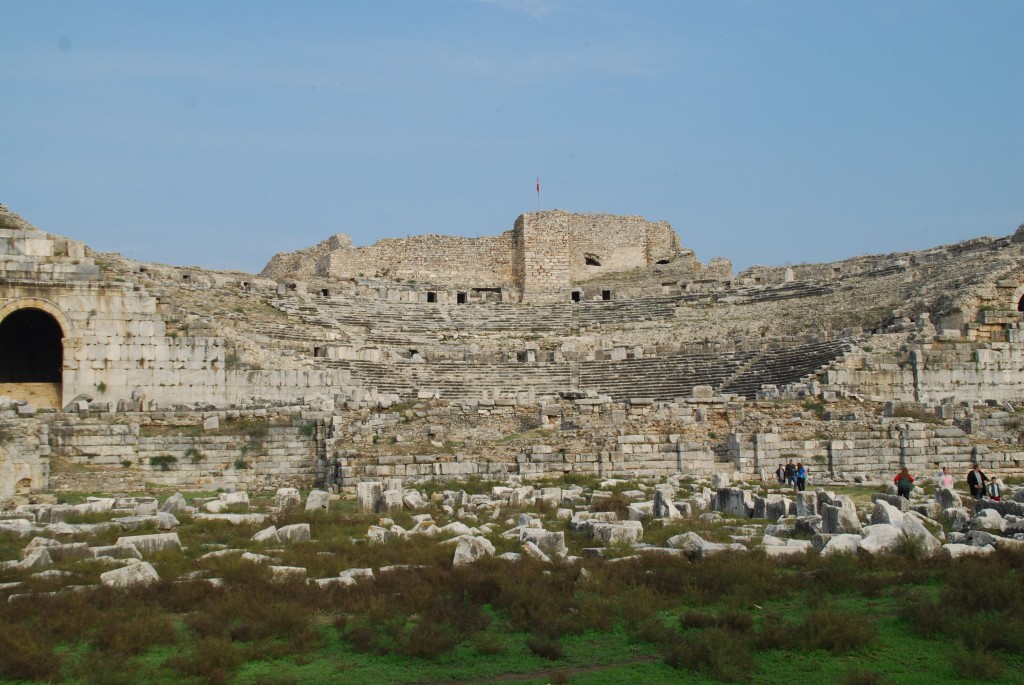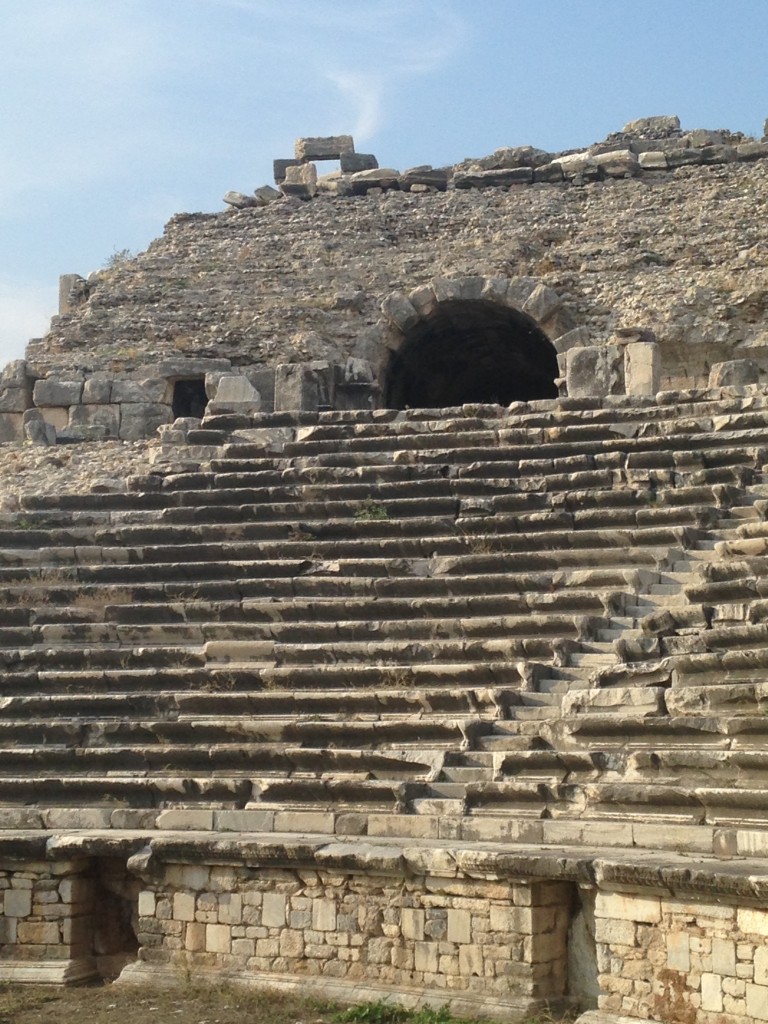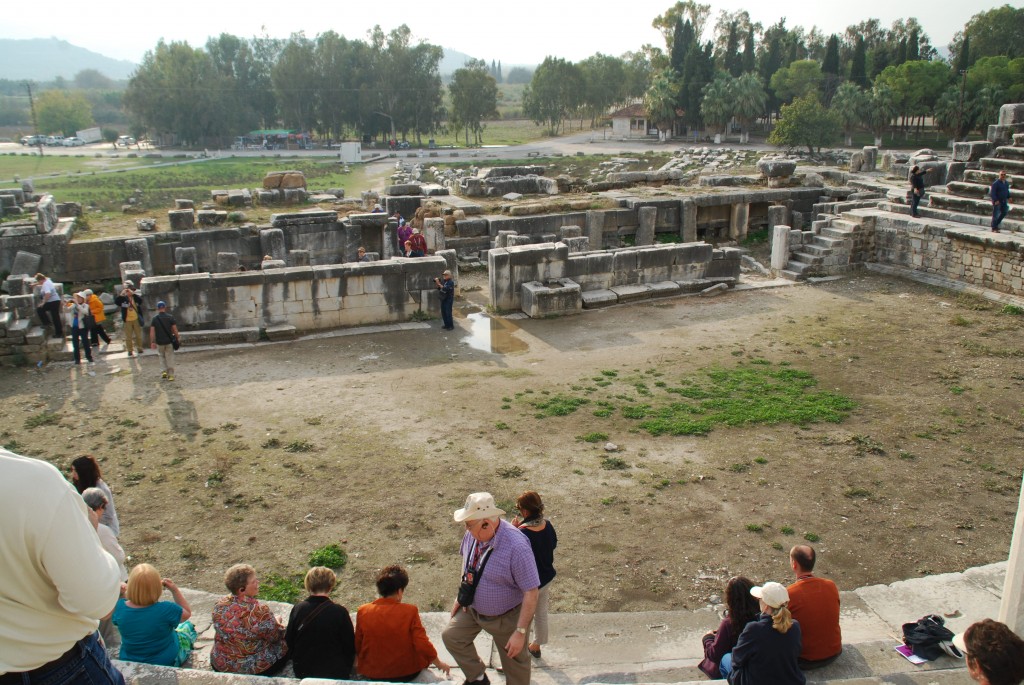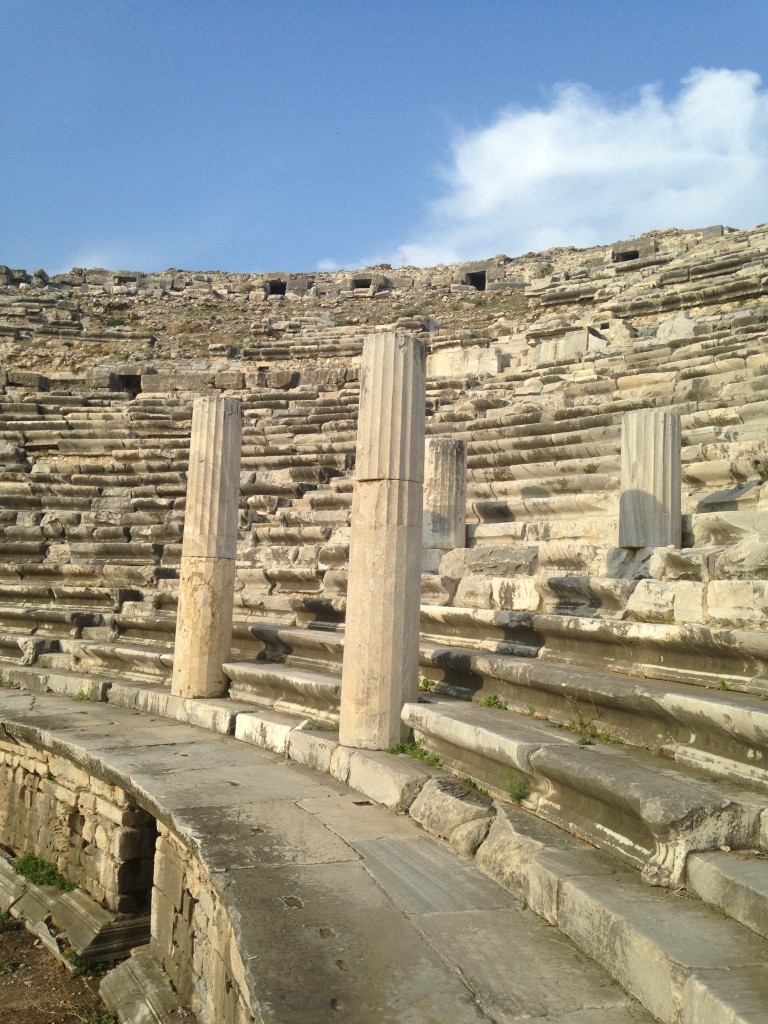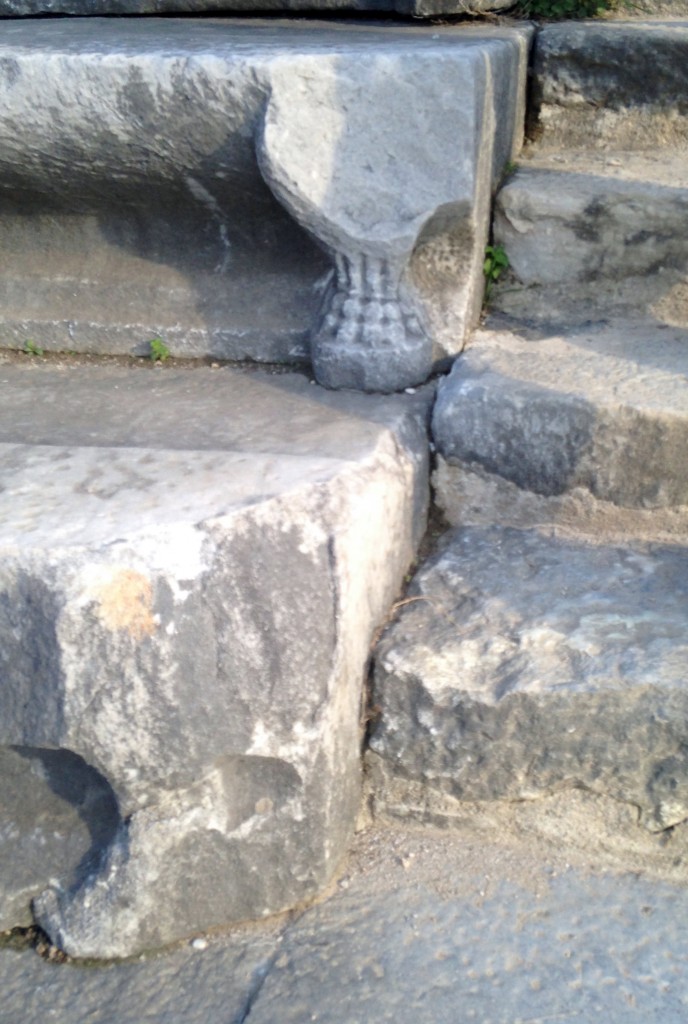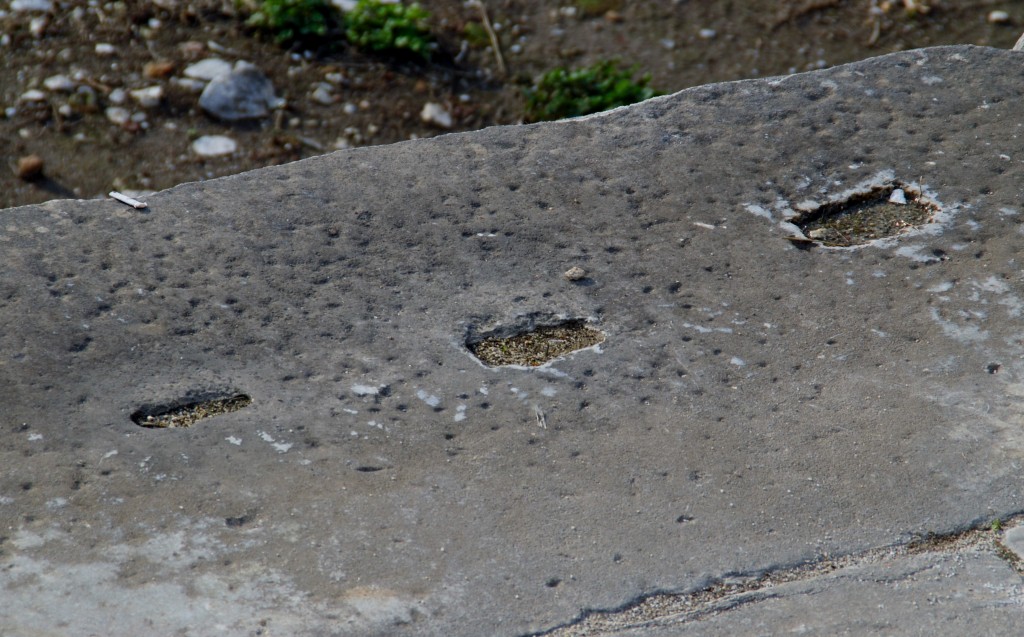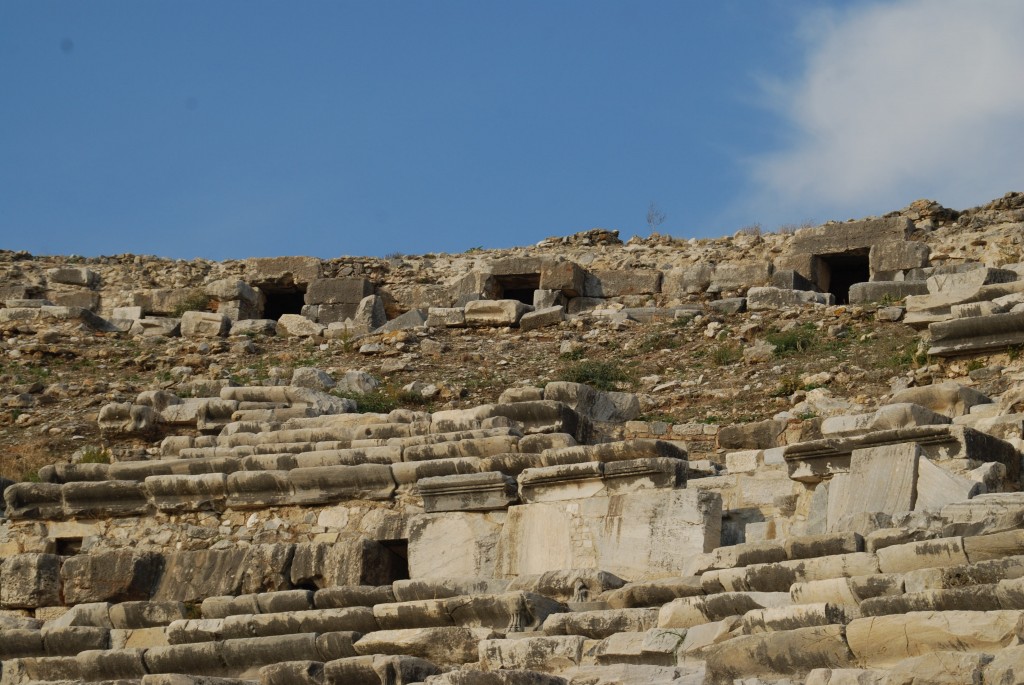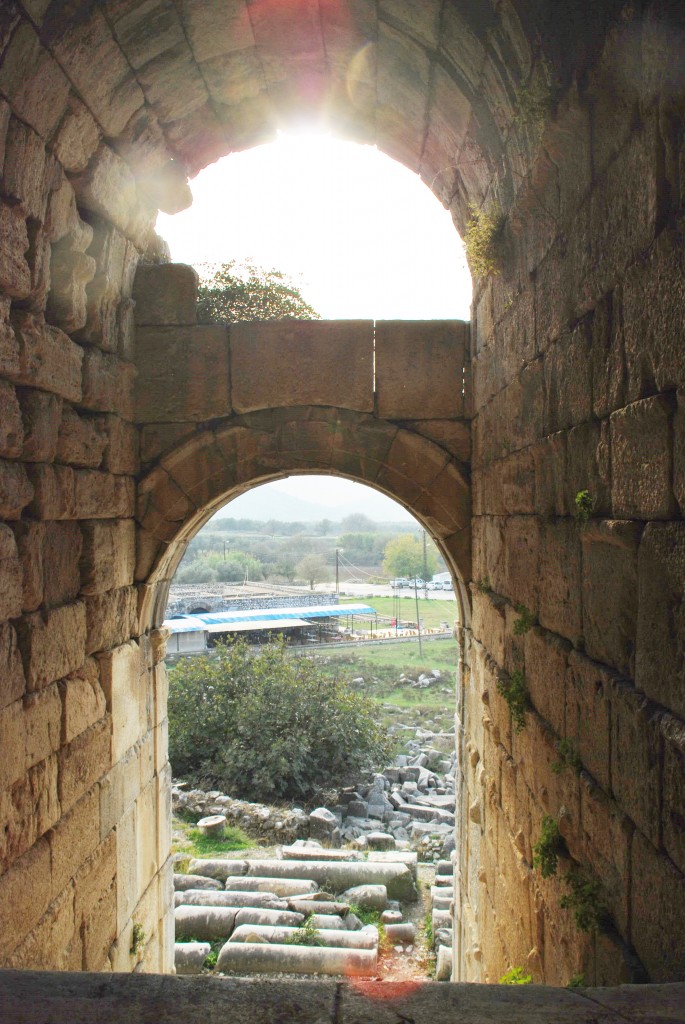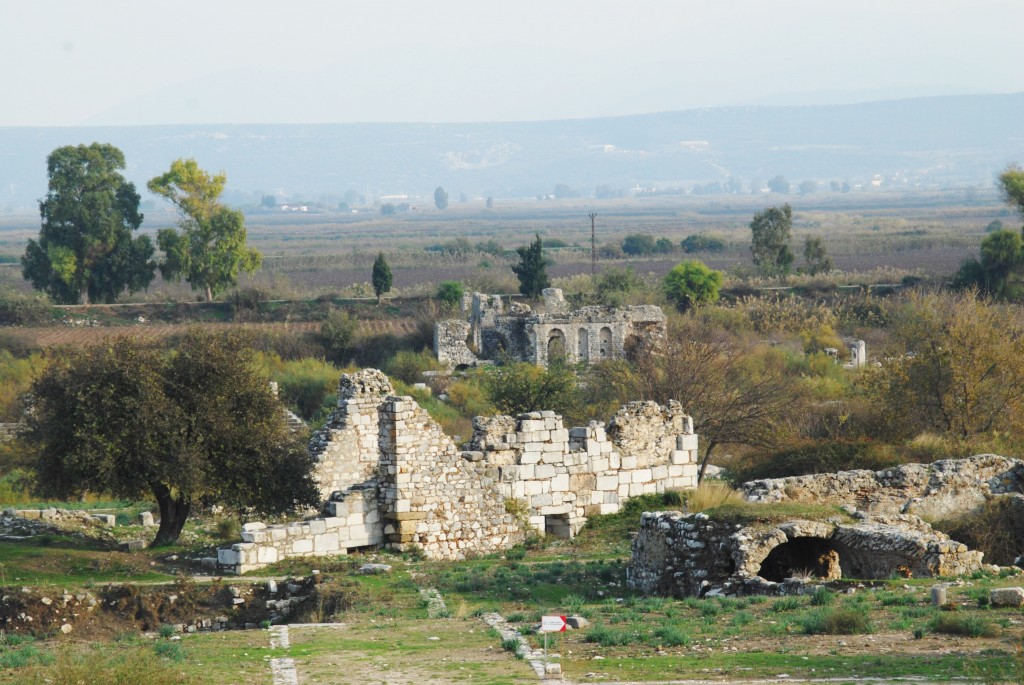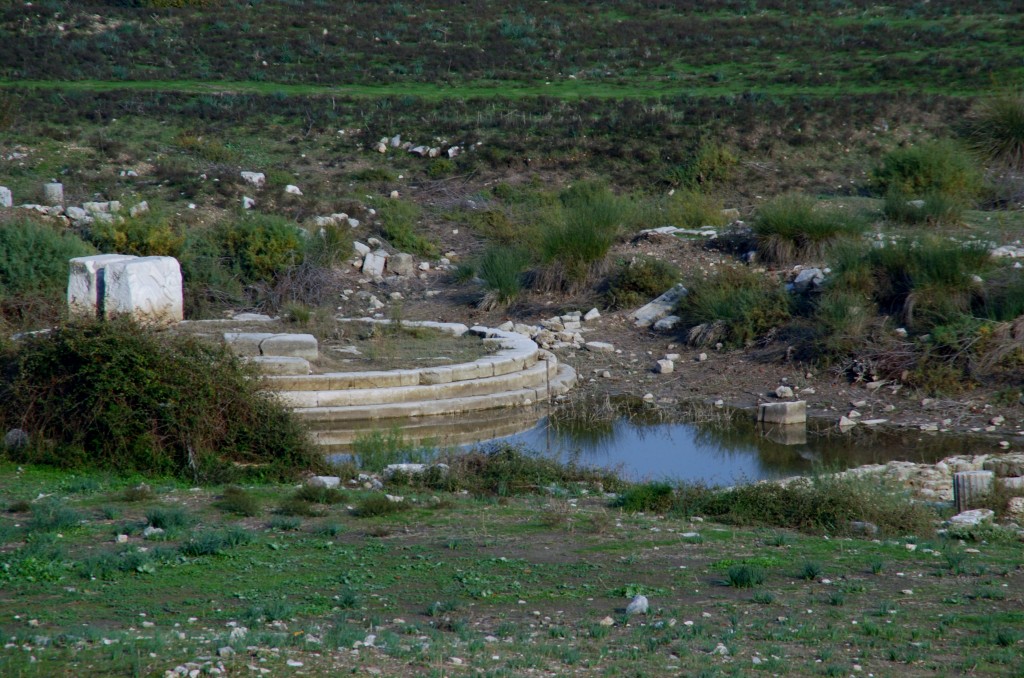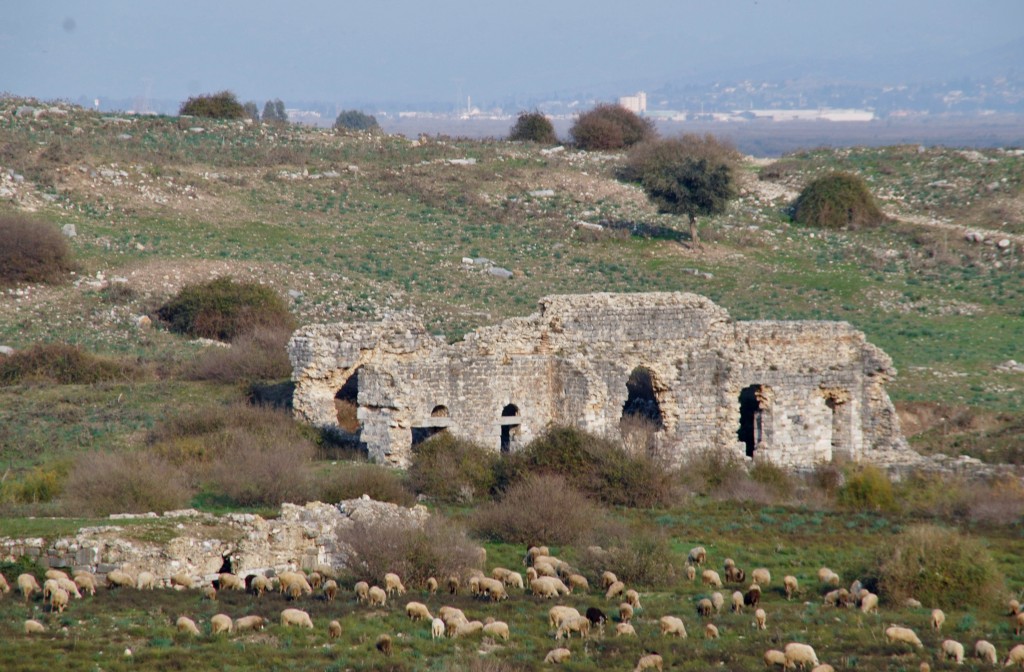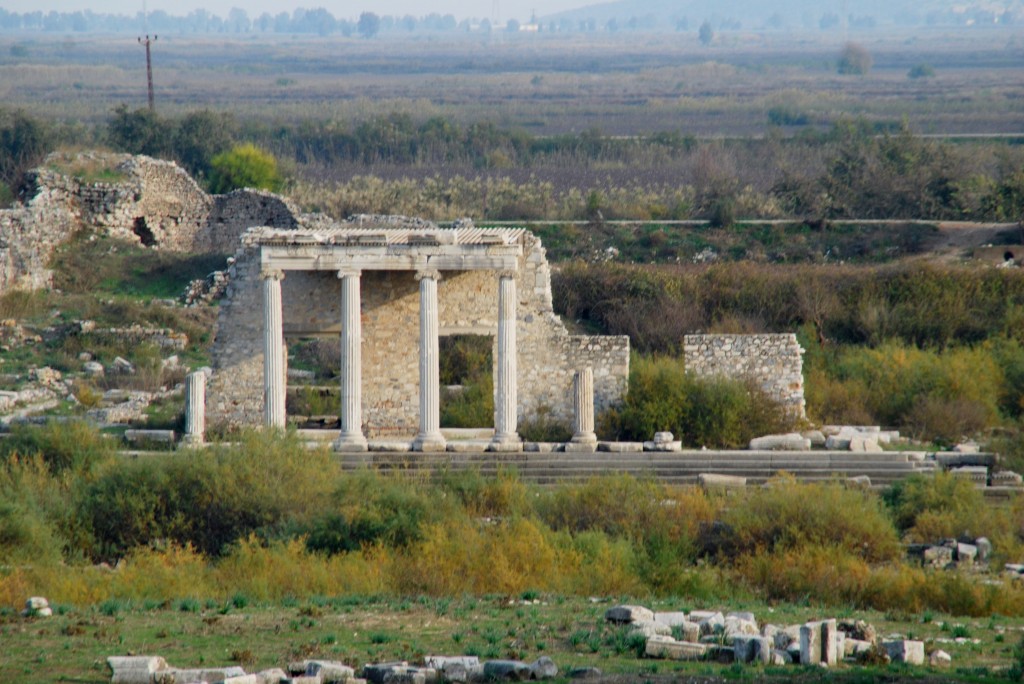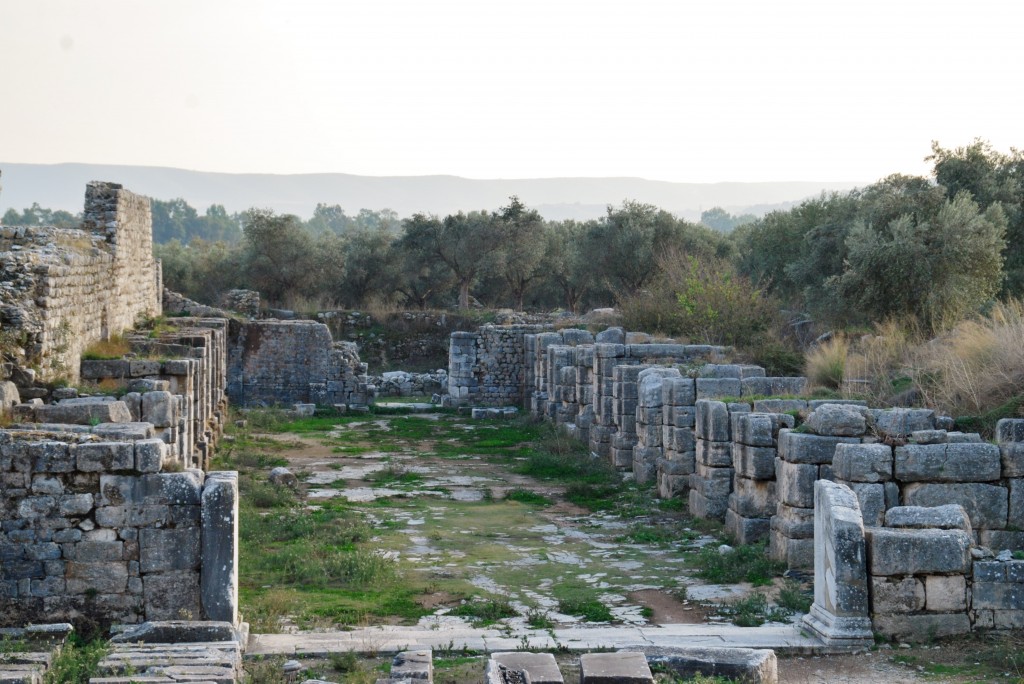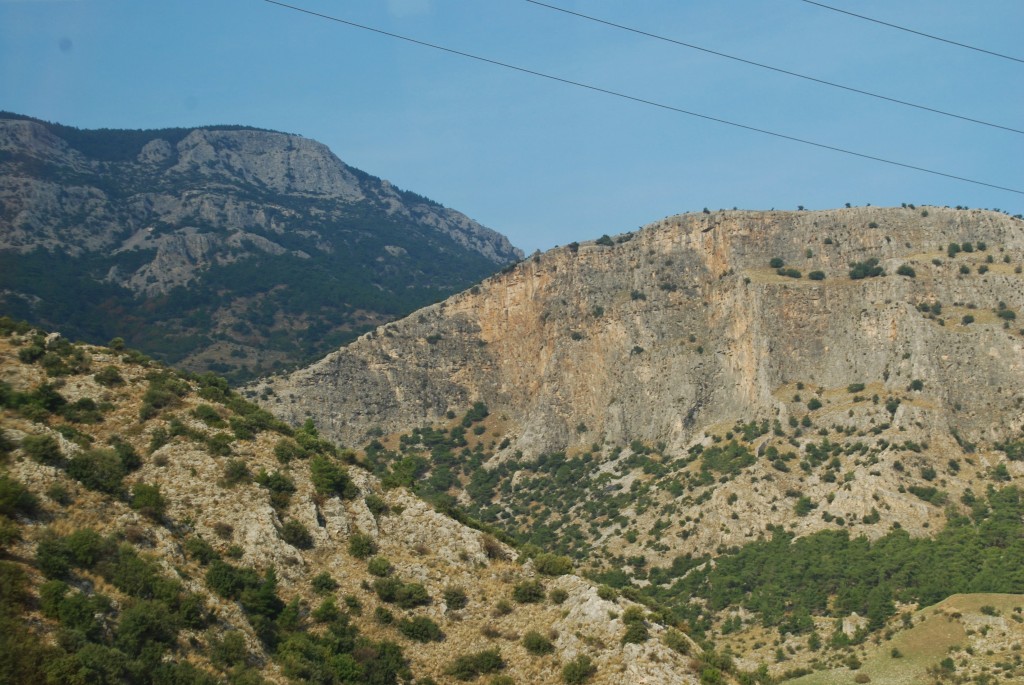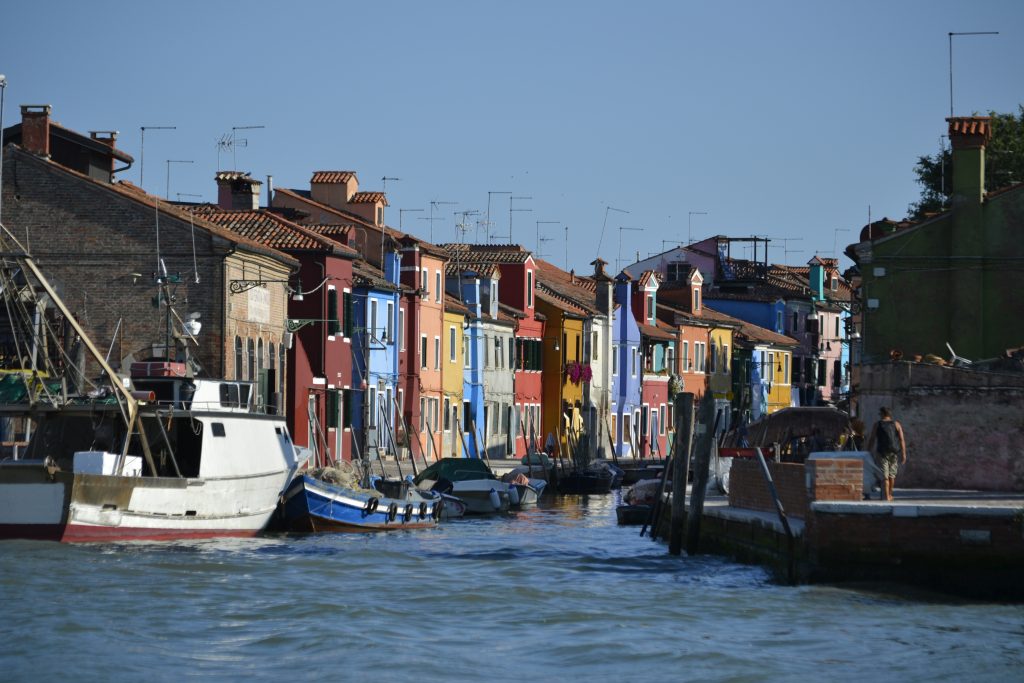
Forty-five minutes later and the ferry from Venice was approaching the island of Burano. Vibrant waterways with pastel colored homes came into view and small fishing boats were docked in front of the homes like cars parked in their driveways. A woman and her child stood at the edge of the dock waving out to the open sea and the blast of a boat’s horn rang out. Local folklore claims that fishermen would paint their homes different colors to identify their family as they departed the island and I could have bet that I had witnessed a legend in the making.
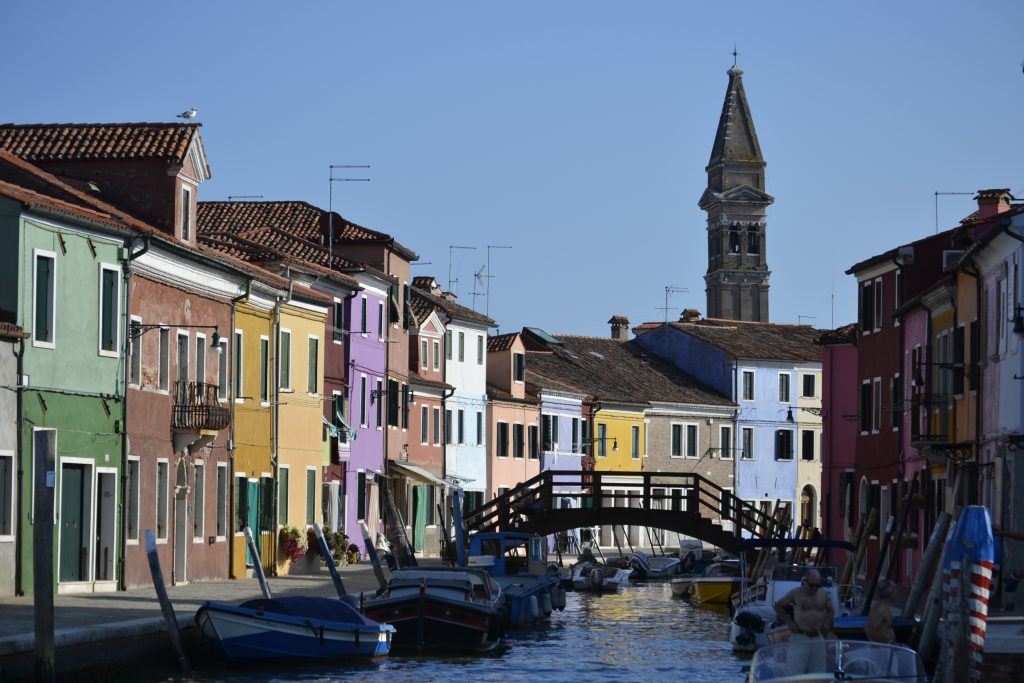
Before the crowded ACTV (ferry) approached the dock, I caught a glimpse of the miniature bridges connecting the waterways and in the distant background, the campanile (bell tower). I looked forward to getting lost among the walkways to purchase some white wine, sample local seafood and shop the lace boutiques in the heart of town.
Reflections of the colorful row houses appeared along the canals as I strolled through the charming isle of Burano. The calmness of the water gave off an identically perfect reflection with only a ripple to disturb the scene. Hardly a tourist was to be seen and I felt as though I had the island all to myself.
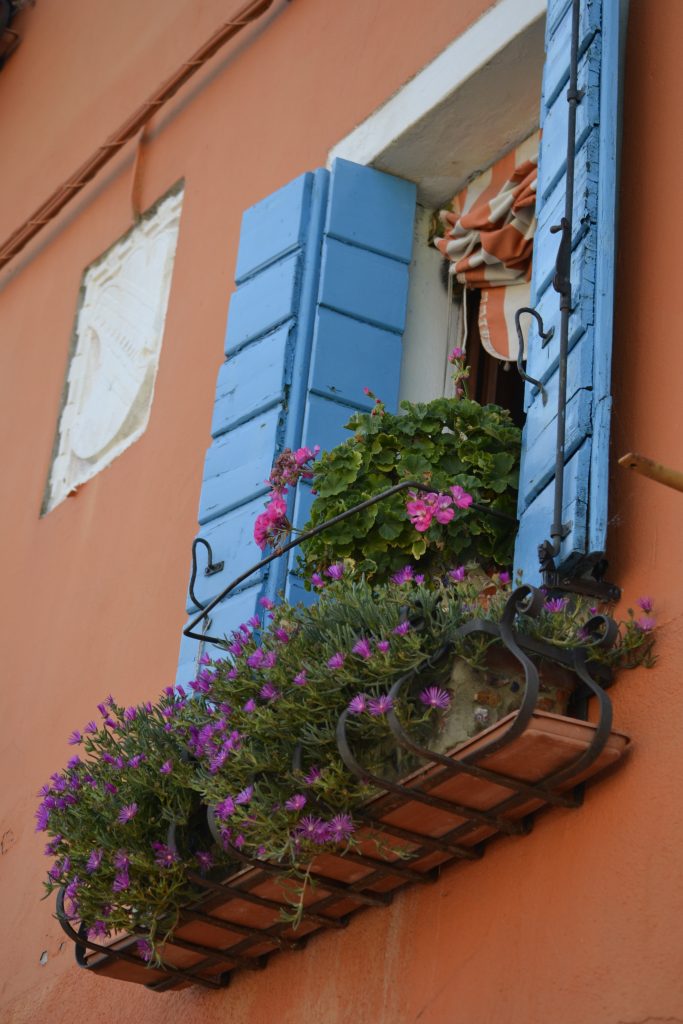
Adding to the appeal of Burano were the decorative flowers that seamlessly flowed from their window boxes. The homes were pristine, well maintained and demonstrated the pride of the residents who had lived here. Many generations have made Burano their home which has made this an incredibly tight community.
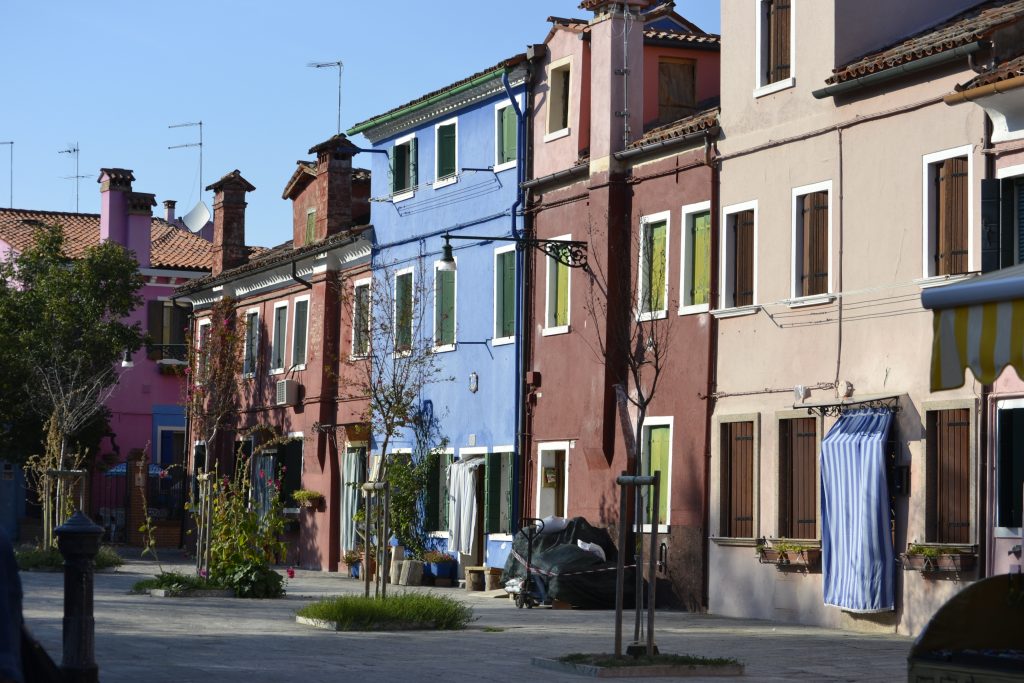
Twenty-eight hundred residents live on the island of Burano and most of them are farmers and fishermen. A part of the Veneto archipelago, Burano is located on the northern part of the lagoon, near Torcello, known as the birthplace of Venice.
The symbol of Venice, the lion, can be seen throughout the island of Burano. A symbol of strength, the lion is also a representation of St. Mark, one of the apostles of Jesus Christ.
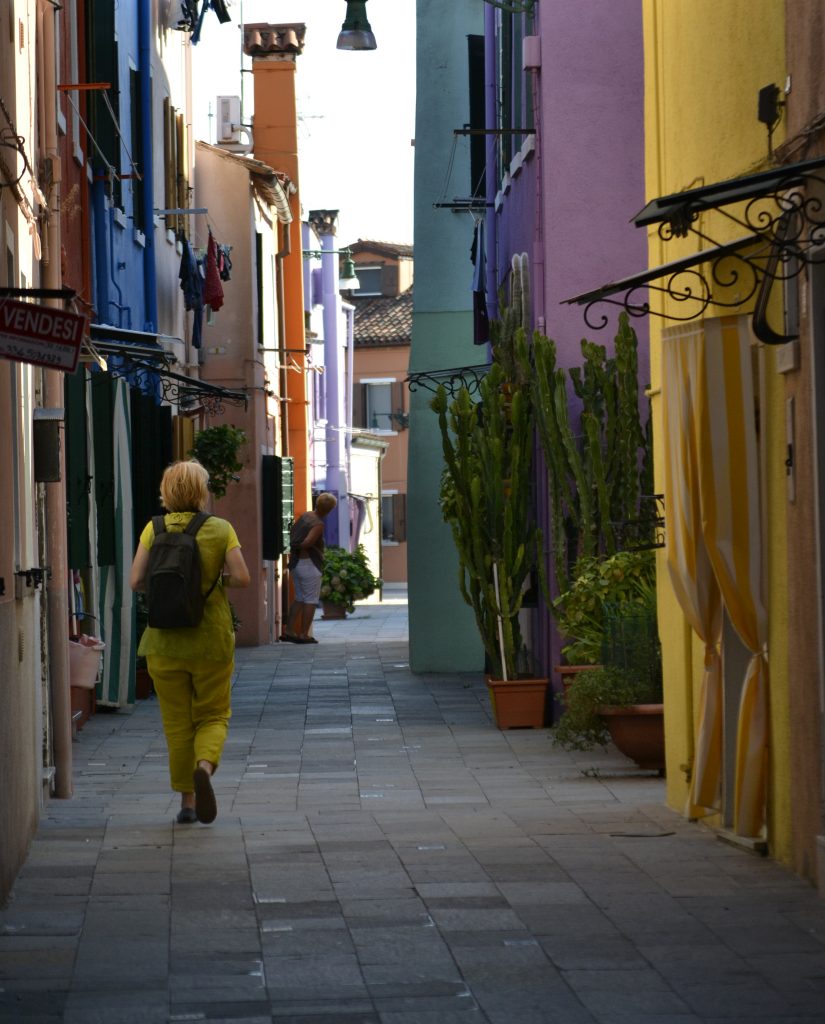
An occasional glimpse through a back street revealed colorful walls and doors of gold, purple and teal. Heading towards the square, I looked forward to exploring the restaurants, gift shops and charming boutiques. The island is most known for its delicate lace and I was hoping to find a beautiful tablecloth to take home as a souvenir.
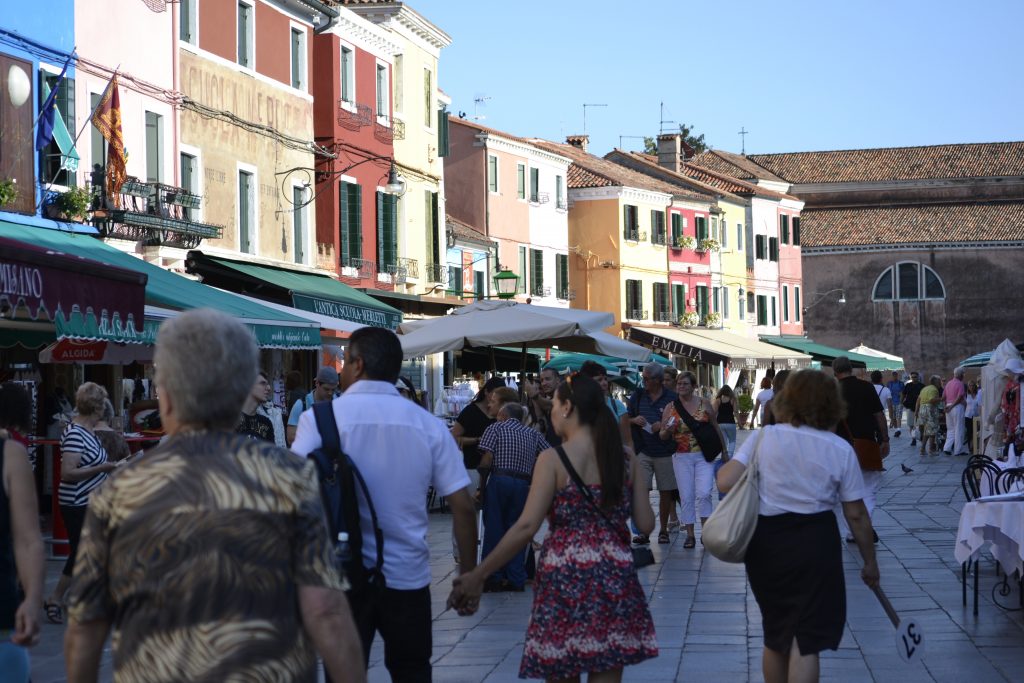
Within a couple of hours, I noticed the island was more crowded than when I had arrived. Galuppi Square was bustling with tourists who were ready to enjoy a relaxing lunch and spend time enjoying their surroundings. Local restaurants surrounded the perimeter of the square while the tables were conveniently set up in the center of the plaza. The menus offered plenty of fish dishes, including a local favorite, the “risotto de go” made with Arborio rice and the small spiny-finned fish of the lagoon. Pizzerias also offered a variety of pies and slices with a wide range of toppings. For dessert, Burano is known for its Bussola Brunei or Esse (the Venetian butter cookies) which should be purchased at the pasticceria, Carmelina Palmisano.
Walking through the maze of streets and over a a few narrow bridges, I enjoyed the sights of the colored homes for a final time. I thought once again of the fishermen’s legend as I boarded the water taxi for Venice. Standing towards the back of the vaporetto, I stared at the purple home and watched it until it disappeared into the distance.
Have you seen the colorful homes of Burano? I would love to hear about your visit if you would kindly leave a message in the comments section below. Many thanks for taking this voyage with me to Burano. Happy Travels!
Where to Stay:
The Centaur Hotel
San Marco
Campo Manin 4297/a
30124, Venice (Italy)
Tel. +39 041 5225832
Where to Eat:
Al Gatto Nero Da Ruggero
Fondamenta della Giudecca
Giudecca di Burano 88
30142 Burano, Italy
Telephone: +39 041 730120
The locals claim that this restaurant makes the best Goby Risotto! Their website suggests the homemade noodles with spider crab which sounds absolutely delicious. The prices are inexpensive and the service is superb!
What to Eat:
- Aperol Spritz is made with Prosecco (bubbly) wine, Aperol and a splash of soda.
- Bellini’s were invented at Harry’s Bar and is my favorite brunch drink made with Prosecco and peach puree.
- Seafood, especially sea bass. Black goby is a local fish from the lagoon and another local dish is fried sardines.
- Vegetables from the Rialto Market
- Instead of pasta, Venice serves rice and polenta. Rice and peas (risi e bisi) is a very popular dish.
- Appetizers such as Venetian meat and cheese (the salami is amazing!) or cicchetti (similar to Spain’s tapas) are small servings that are the right portions. Baccala Mantecato is a topping for cicchetti made of creamed white fish.
- Polpetta are deep fried meatballs
- For lunch, the locals will order Tramezzino (sandwich) which is triangular in shape.
- Dishes served with Nero di Seppia (Squid Ink Sauce) are a delicacy and the squid ink is very dark, so it may come as a surprise when your dish arrives.
- Fritto Misto (Fried Fish and Seafood) can also include fried vegetables.
- Venetian cookies (Buranelli – from the island of Burano and Sfogliatine) can be purchased at the local bakery.
What to Read:
- Donna Leon has a series of crime novels all based in Venice.
- The Glassblower of Murano, by Marina Fiorato
- A Venetian Affair, by Andrea di Robilant
- The City of Falling Angels, by John Berendt
- Dead Lagoon, by Michael Dibdin
- A Thousand Days in Venice, by Marlena De Biasi
Photo Guide for Venice:
- The Bridge of Sighs leads to the waterfront dungeons and is best photographed from the Ponte della Paglia.
- Burano is one of the islands within the Veneto was once a community of fishermen. The colorful homes can seen from a distance as the vaparetto approaches. The colors of the island and reflections make memorable photographs.
- Piazza San Marco / St. Mark’s Square is the main meeting place in Venice to explore the Doge’s Palace, the Campanile and the Clock.
- Pont de l’Academie translates as the Academia Bridge and is the second most popular bridge behind the Rialto Bridge.
- The Rialto Bridge at Sunrise and Sunset; Take a trip on the vaparetto along the Grand Canal for some amazing photo opportunities.
- Rivi degli Schiavoni is where the gondolas are “parked” with the Church of San Giorgio Maggiore in the background.
- St. Mark’s Campanile is the bell tower in the square. Visitors can purchase tickets to ride up to the top for spectacular views of the lagoon and nearby buildings.
- If you can visit during the Venice Carnival celebration, you will have many opportunities for some amazing, dramatic photos of people dressed in costume.
Disclosure: Please refer to our blog disclaimer tab for more information.
